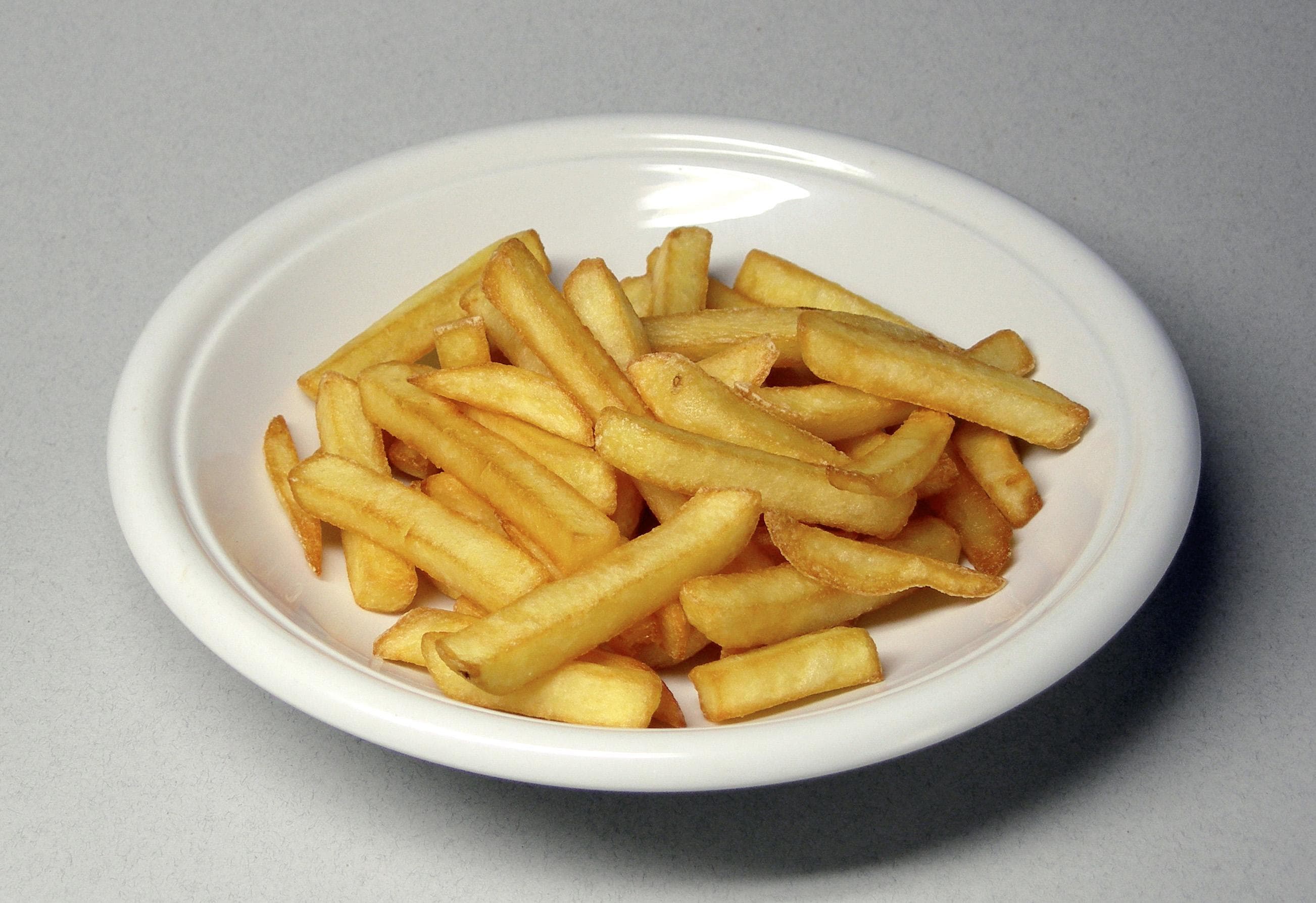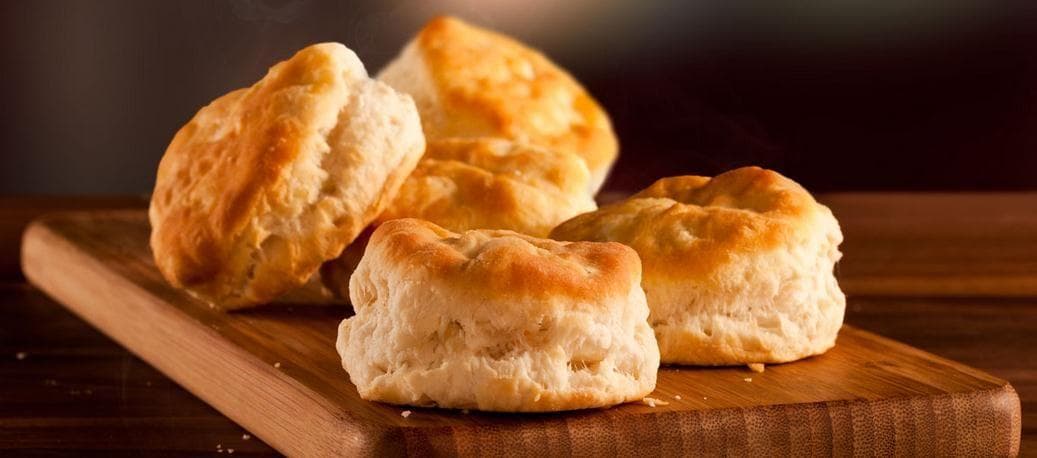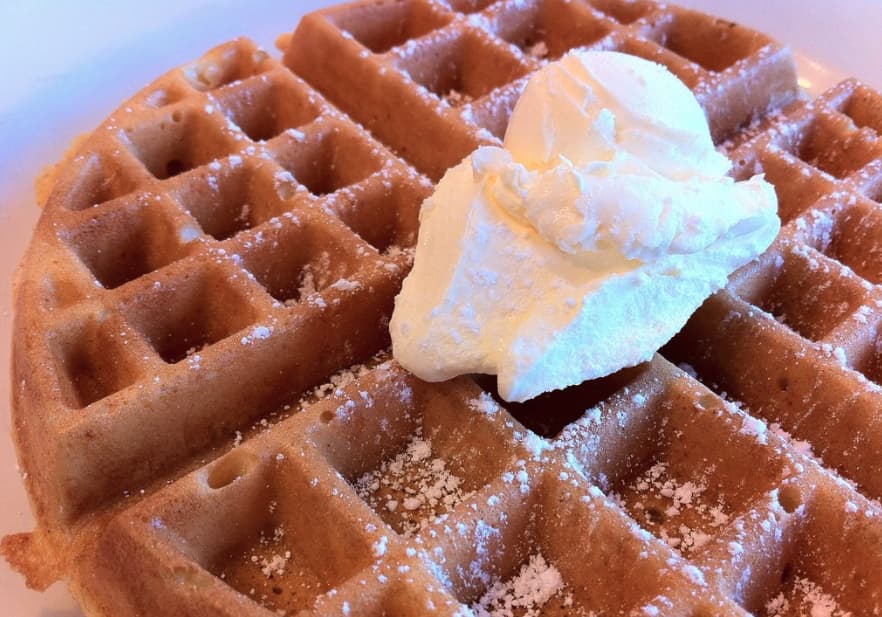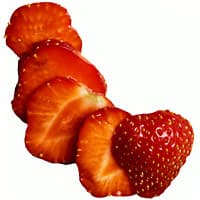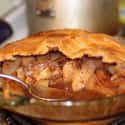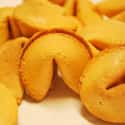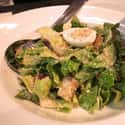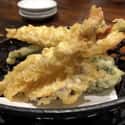(#10) Apple pie
- Food
The Dish: Apple pie
Where People Think It Comes From: The United States
Associated with American prosperity and patriotism, apple pie didn't get its start in the United States. In fact, it wouldn't be a North American, much less American, dish at all had it not been for European settlers, especially those from England.
Where It Actually Originated: When colonists arrived in North America, they found only one type of apple: crab apples. Thought to be a "poor substitute" for European apples, crab apples were rarely eaten, and were largely used to make cider. As settlers began to cultivate land in North America, they introduced new types of apples, bringing seeds and trees over from Europe.
This could, in theory, be seen as the origin of American pie but, in truth, European settlers were simply baking foods they'd been eating for centuries. An English recipe from 1381 attests to early versions of apple pie, featuring "figs, raisins, pears, and saffron in addition to apples."
The pure number of apple varieties introduced to North America - and the dissemination of seeds by the likes of folklore figure Johnny Appleseed - alongside literary references and advertisements, factored heavily into the connection between apple pie and Americana.
(#7) The Origins Of Fortune Cookies Are Japanese, Not Chinese
The Dish: Fortune cookies
Where People Think It Comes From: China or the United States
Cracking open a fortune cookie at the end of a meal in a Chinese restaurant is simply part of the experience. While theories about when and where fortune cookies came to fruition vary, there's one thing scholars agree upon: They aren't Chinese.
One school of thought holds that fortune cookies are part of the Chinese-American tradition, popularized during the early 20th century by Asian immigrants in California. Attributed to both Sumiharu Hagiwara-Nagata, a San Francisco-based landscape architect, and David Jung, a preacher from Los Angeles, fortune cookies were available nationwide by the mid-1930s.
Where It Actually Originated: The prevailing theory is that so-called Chinese fortune cookies are actually Japanese creations. According to researcher Yasuko Nakamachi, fortune cookies were present in Japan during the 19th century, their triangle shapes represented in literary and artistic documents alike.
Japanese baker Takeshi Matsuhisu insists that treats filled with fortunes date back to the 17th century, when "tsujiura senbei," "omikuji senbei," and "suzu senbei" provided fortunes and numerological guidance.
Regardless, there is Japanese precedent for fortune cookies as they exist now. In defense of their association with both China and America, however, Derrick Wong, an executive at one of the leading fortune cookie manufacturers in the world, insists, "The Japanese may have invented the fortune cookie. But the Chinese people really explored the potential of the fortune cookie. It's Chinese-American culture. It only happens here, not in China."
(#9) Spaghetti with meatballs
- Food
The Dish: Spaghetti with meatballs
Where People Think It Comes From: Italy
Reminiscent of traditional Italian polpettes - meatballs eaten as standalone meals - meatballs were served with tomato-based sauces and pasta only when Italian immigrants came to the United States.
Where It Actually Originated: Cookbooks didn't offer up recipes for red sauce and pasta until 1797. While that pairing is French in nature, the addition of meatballs is decidedly American.
As Italian immigrants flocked to the United States during the late 19th and early 20th centuries, they brought their food preferences with them. In Italy, meat had been difficult to afford, but in America, Italian immigrants could purchase meat with increasing regularity. Often opting for lower-quality meat, Italian immigrants mixed proteins with bread and milk to produce moist, ball-like dining fare.
As Italian restaurants paired starches and proteins, canned tomatoes and dry pasta offered cheap, quick dining options in Italian-American homes. Soon, spaghetti was a staple within American cuisine.
(#4) Croissant
- Dish
The Dish: Croissants
Where People Think It Comes From: France
Where It Actually Originated: The first record of croissants in France didn't appear until the mid-19th century. Austrian baker August Zang opened a shop in Paris in 1838, introducing Viennese crescents to the city. While Zang only stayed in France briefly, French bakers soon began making Austrian kipfel with puff pastry, heaping innovation upon a long-established bread-baking tradition.
Bite down into a crescent-shaped Austrian kipfel - a pastry made from butter, sugar, and flour - and it might remind you of a French croissant. While a modern kipfel resembles a half-moon-shaped cookie, the origins of the croissant - one of France's most identifiable foods - do, in fact, reside in this Austrian treat.
Pastry-like breads are thought to have been made by pagans in antiquity as well as by Germanic groups throughout Europe. Documentation from the 13th century indicates that Viennese bakers presented Duke Leopold with kipfel in 1227. During subsequent centuries, historical records include numerous references to kipfel, offering insights into recipe variations over time.
(#5) Caesar salad
The Dish: Caesar salad
Where People Think It Comes From: The United States
With a name like Caesar salad, you might think the cold favorite came straight out of ancient Rome. Rather, the salad has long been considered an American creation, named for chef Caesar Cardini.
Where It Actually Originated: In truth, Cardini - an Italian immigrant who worked in Tijuana, Mexico - invented the salad.
The original Caesar salad - made with Romaine lettuce, croutons, Parmesan cheese, boiled egg, garlic, olive oil, and Worcestershire sauce - came to life when Chef Cardini simply tossed together ingredients he had available to him. Over Fourth of July weekend in 1924, according to legend, Cardini served the salad to friends and it was a hit. Two years later, Caesar's brother Alex added the anchovies.
Cardini thrived south of the border thanks to Americans fleeing restrictions brought on by Prohibition. Author and culinary celebrity Julia Child remembered visiting Cardini's restaurant in her youth:
One of my early remembrances of restaurant life was going to Tijuana in 1925 or 1926 with my parents, who were wildly excited that they should finally lunch at Caesar’s restaurant. Tijuana, just south of the Mexican border from San Diego, was flourishing then, in the prohibition era... Words spread about Tijuana and the good life, and about Caesar Cardini’s restaurant, and about Caesar’s salad.
(#2) Tempura
- Japanese Cuisine
The Dish: Tempura
Where People Think It Comes From: Japan
Where It Actually Originated: Tempura, battered and fried seafood or vegetables, is considered a Japanese food, but it was actually introduced to Japan by Portuguese Jesuits - traveling on a Chinese ship - during the mid-16th century.
Once the Portuguese had their footing in Japan, they remained for nearly a century, exchanging goods, ideas, and recipes. The traditional Portuguese dish, "peixinhos da horta," left an indelible mark on Japan.
Translated to "little fish of the garden," peixinhos da horta was made by battering and frying green beans. The Japanese renamed it tempura, derived for the Latin word "tempora," indicative of Lenten prohibitions on meat.
New Random Displays Display All By Ranking
About This Tool
Nowadays, many national foods are considered to be part of a certain country, although these foods' origins were not there, and even exist in a completely different form in the place of origin, just like the Chinese food you eat in Chinese restaurants in the United States and they are definitely two kinds of Chinese food that China. There are also many other national foods with wrong origins around the world that you may never know.
You could check the random tool if you are interested in the essential national foods whose wrong origins, many people do not know that the red spaghetti sauce first appeared in a French cookbook in 1797, the tool will help you to learn more about interesting foods' history.
Our data comes from Ranker, If you want to participate in the ranking of items displayed on this page, please click here.





